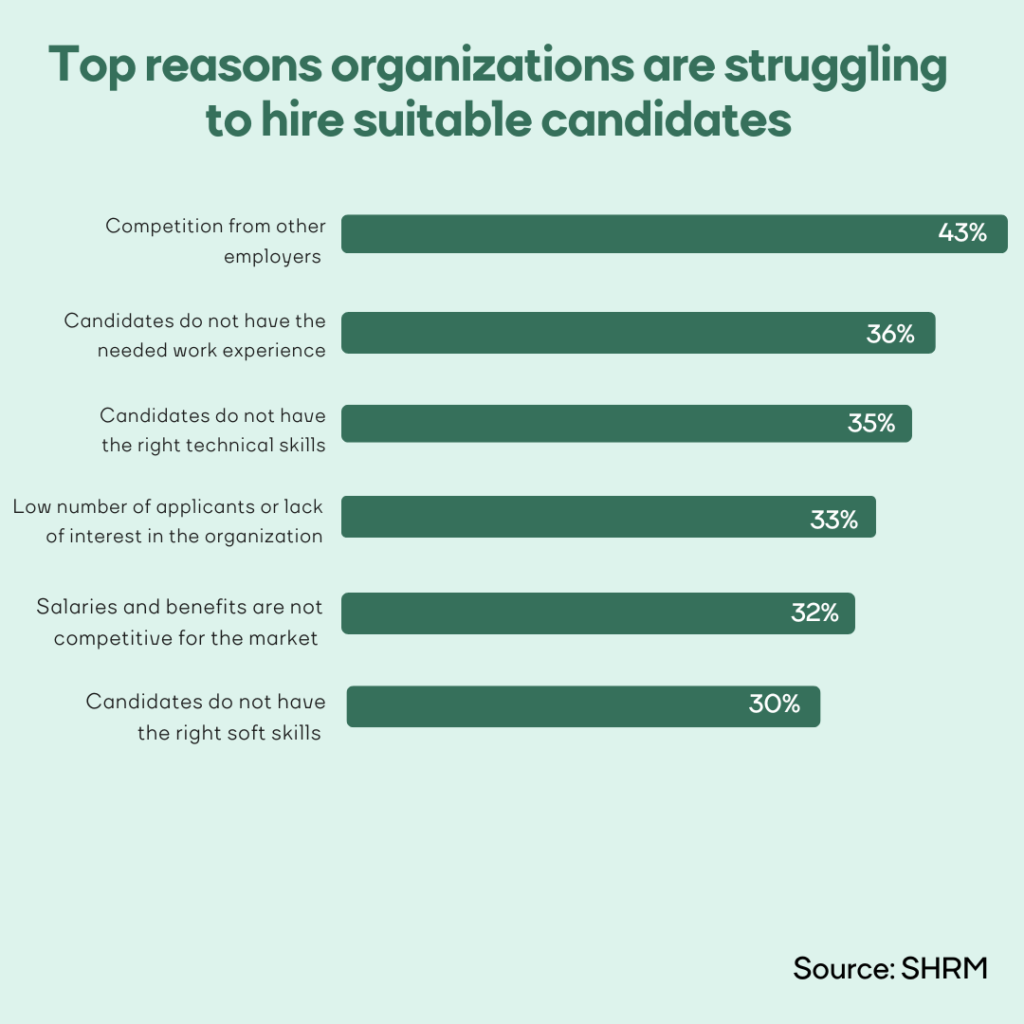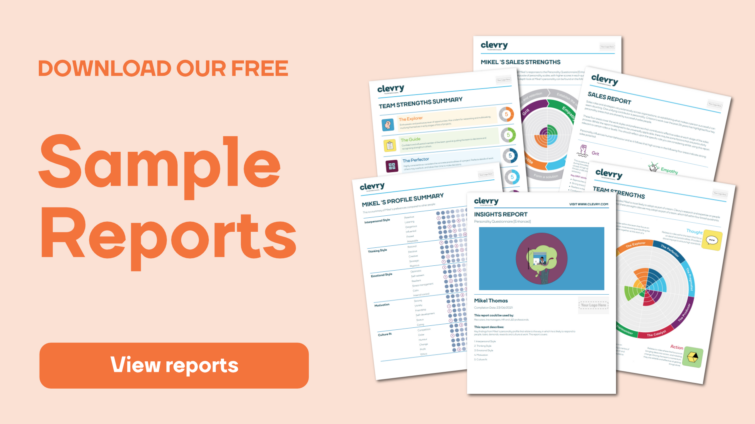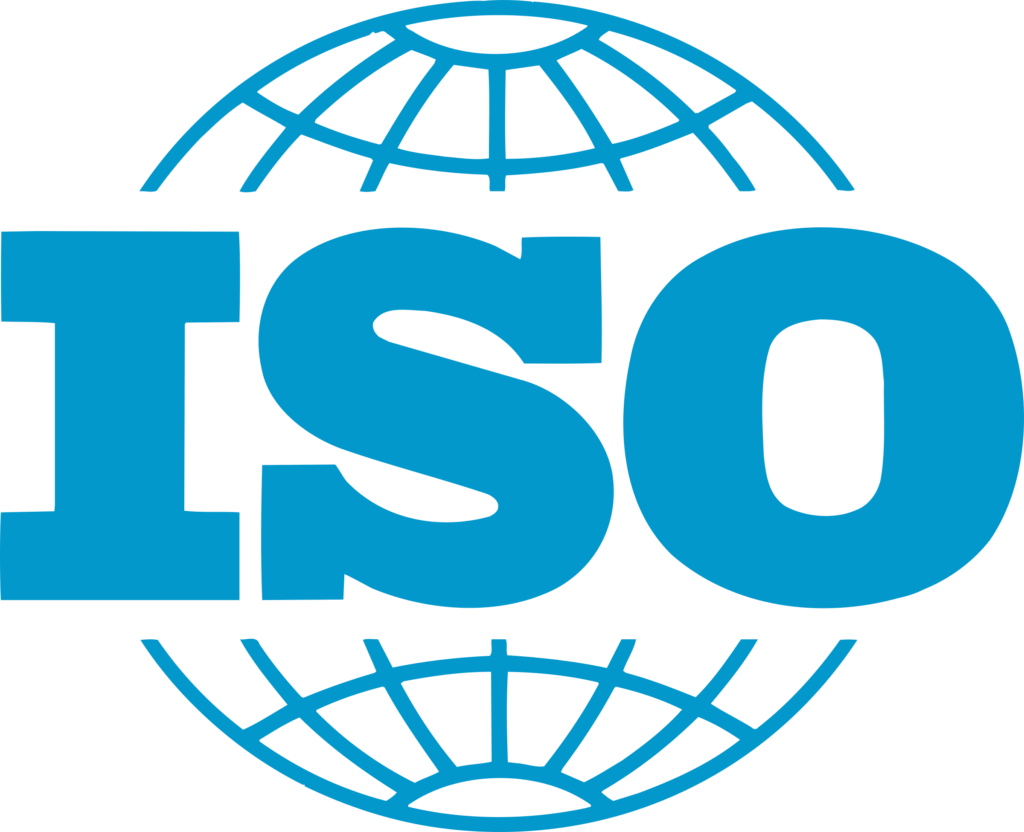While we’re waiting for robots to take over all our jobs, there is still a need for human beings. With the latest artificial intelligence applications like ChatGPT, AI has taken the professional world by storm, promising to boost productivity and free professionals from their tedious tasks. But at the same time, the talk about talent shortage is accelerating, and many predict that things are only getting worse. Skilled professionals are hard to come by in many industries, but is there another side to the story?

What is talent shortage?
Simply put, a talent shortage is when companies cannot find qualified talent to fill their job vacancies. This mismatch between the demand and supply of skills and competencies has significant implications for companies, from decreased productivity and delayed projects to higher burnout rates and increased employee turnover.
Several factors can contribute to the talent shortage, which has been building for years. Some of the reasons include:
Demographic changes: Older generations are retiring, and fewer younger workers are replacing them, leaving a gap in the available workforce.
Geographical Disparity: Jobs may exist in areas where the skilled workers do not, and vice versa. This geographical imbalance can lead to talent shortages, particularly in industries that require specialised skills.
Rapid technological changes: The speed of technological advancement often outpaces the ability of workers to learn and adapt to new tools and systems, leading to a shortage of workers who can effectively use and manage new technologies.

The talent shortage is a complex issue with multiple contributing factors. There are industries and regions with acute shortages of skilled professionals. For example, highly specialised roles in technology, healthcare, or advanced manufacturing often have more vacancies than suitable candidates.
While there’s an undeniable shortfall in skilled professionals, the talent shortage narrative needs a deeper examination.
While there’s an undeniable shortfall in skilled professionals, the talent shortage narrative needs a deeper examination. Acknowledging the elephant in the room is crucial — are companies’ hiring practices exacerbating this perceived shortage?
Rethinking Traditional Hiring Practices
The traditional approach to recruitment heavily emphasises educational qualifications, prior experience, and specific hard skills. However, this method can be shortsighted, overlooking talented individuals who may not fit within these defined lines but possess a wealth of potential.
Relying on candidates’ previous experience or academic performance as an indicator of future job performance is an outdated method that limits talent pools.
Hiring for Potential: A Paradigm Shift
More and more, forward-thinking businesses recognise the value of hiring for potential. This approach shifts the focus from what a candidate has done to what they can do. Hiring for potential considers candidates’ soft skills such as problem-solving skills, growth mindset, adaptability, and capacity to learn — factors not evident on a resume but critical across many different roles and industries.
Hiring for potential doesn’t suggest that qualifications become obsolete; instead, it advocates for a more balanced view that values transferrable skills, adaptability and willingness to learn. When hiring for potential, you typically look for candidates with the right soft skills and some hard skills to back them up but with little to no industry experience.
It’s good to keep in mind that when hiring for potential, you acknowledge that the candidate is falling short on certain essential skills and will not necessarily be productive right from the get-go. While this approach might initially require more investment in training and development, the long-term benefits often outweigh the costs.
Overcoming the challenges of talent shortage
Talent shortage stems from different reasons and many of them are beyond companies’ control — but luckily, there are steps that organisations can take to battle talent shortage.
Training and Development: Invest in training programs to upskill or reskill existing employees. This could be through in-house training programs, partnerships with educational institutions, or subsidized further education.
Apprenticeship Programs: Establishing apprenticeship or internship programs can help companies develop a pipeline of talent. These programs often give younger or less-experienced individuals the opportunity to learn and grow within a company.
Invest in assessment software: Assessment software helps identify candidates with the right behaviours and cognitive abilities related to high potential and learning agility. Assessments help streamline the hiring process, reduce bias and predict job performance. By effectively identifying candidates with the right soft skills and the highest potential, companies can reduce the costs associated with bad hires and high employee turnover, resulting in positive ROI in the long run.
View the output from Clevry assessments by downloading sample reports below.
Flexible Work Arrangements: Offering flexible work options such as part-time work, job-sharing, and flexible hours can make a company more attractive to potential employees and help retain existing staff.
Diversity and Inclusion Initiatives: Companies can access a broader range of talent by fostering an inclusive culture and targeting recruitment efforts to include underrepresented groups.
Recruitment Process Outsourcing (RPO): Partnering with external agencies specialising in recruiting can provide access to larger talent pools and relieve the internal burden of recruitment.
Wrapping up
While real and urgent, the talent shortage also opens the doors to a necessary reconsideration of today’s hiring methods. Talent shortage harms business performance, growth potential and customer satisfaction. To cope with the issue, organizations need to revamp their hiring methods, and the first step forward is to review their hiring criteria.



